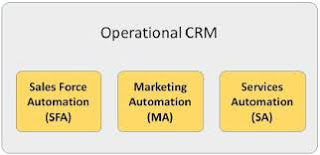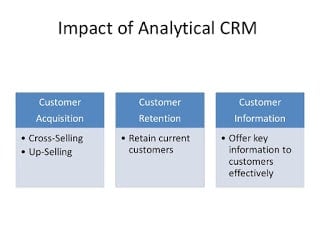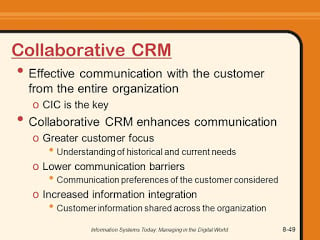Too Many Requests from Your Network
Please complete verification to access this content.
CRM (Customer Relationship Management), as the term, defines itself that managing relationship between customers and an enterprise.
This approach, practice or exercise involve customers` data which processes through different techniques, in order to improve the company-customer relationship.
Business grows with profit and profit comes through customers. The more enterprise has customers, the more it will earn the profit.
In order to retain customers for longer time period, businesses use CRM. Every business, small or large scale, do CRM on their level.

Even every individual do CRM as per his capacity. Basically, the purpose of CRM is to analyze customer data to improve service.
This data includes personal information, inquiries from customers, sales made by the particular customer, and repetition of sales.
The invention of the computer and internet have the great effect on businesses. A major shift has been seen after use of computer and internet in business.
Same other areas, enterprises are also now shifted their operations on the computer and now they manage every activity through the computer.
Similarly, managing customers activities are now easier with help of technology. The software is made for CRM. CRM software store, analyze and interpret customers` data.
CRM systems/Software are specifically designed to gather customer data from different ends. This data includes personal information of customers, their purchase history, their inquiries, buying preferences.
With help of this CRM software, front end staff can easily access to this data.
Initially, CRM was just a topic of marketing but now it is studied independently. With the help of technology, CRM systems (Software) have been created.
Based on activities and nature CRM systems has been divided into three main categories, Operational CRM, Analytical CRM and Collaborative CRM.
Operational CRM Systems
Three types of CRM; Operational CRM
Operational CRM integrates and automates three main business activities; Sales, Marketing, and Service— Customer support. That`s why operation systems have a dashboard that presents overall view of these three activities` data of a customer that company has.
One page dashboard provides overview of client basic information, previous marketing activities, past sales, and any contact made previously between customer and company.
Sales Automation, Marketing Automation, and Service Automation are the main component of Operational CRM.
Sales Force Automation
Sales force automation involves all the stages of sales, starting from entering basic contact information of any customer to transforming him a prospective business client.
For example, Oracle releases a CRM software in August 2000, which record contact information, makes schedules and performance tracking that is available to all employees so that they can easily access all the information through the internet.
Basically, sales force automation automate all sales activities. Who is the customer? What is his tracking number? What is his purchase history? What
What has marketing activities been done with him? What queries has been made from him? And future predictions about him. Sales force automation also coordinates marketing activities, call centers and integrate retail outlets. This CRM system
Sales force automation also coordinates marketing activities, call centers and integrate retail outlets. This CRM system allows company to stop duplication of activities and track all activities between both parties.
Marketing Automation
Marketing Automation concentrates on the process of making marketing campaigns more easy, well-organized, proficient, effective and operative.
Marketing Automation CRM System allows business to implement those marketing campaigns which are more relevant to its target customers as well as how to implement those marketing campaigns and how to engage customers with these campaigns.
CRM Systems with Marketing Automation tools help business to do marketing tasks repeatedly i.e. sending marketing emails at different times or posting marketing activities on social media.
Basic marketing Automation purpose is to convert sales lead into the final and repeated customer.
Service Automation
Service Automation CRM System are used to facilitate customers in order to give them better service. Customers are helped through different ways, for example, mobile phone, emails, SMS, FAQs, tracking codes, Portals, and helplines. All these activities managed through Service Automation. Microsoft Dynamics CRM System manages customers call time, call resolution, emails, SMS and more to improve the efficiency of service staff.
All these activities managed through Service Automation. Microsoft Dynamics CRM System manages customers call time, call resolution, emails, SMS and more to improve the efficiency of service staff.
Analytical CRM Systems
Three types of CRM; Analytical CRMAs term define itself, Analytical CRM Systems are used to analyzed customer data. Data gathered. 
Data gathered from different sources i.e. primary source or secondary source. Businesses can collect data by themselves or take from other data provider firms. Companies can collect data through surveys, interviews, and polls. Emails, SMS, phone calls, social networking website are platforms to use
Companies can collect data through surveys, interviews, and polls. Emails, SMS, phone calls, social networking website are platforms to use previously discussed data collection tools.
Analyzed data then present to managers and decision makers to make more informed and well decisions in business favor. Analytical CRM tools can mine data too. Furthermore, data can be correlated, rearranged and recognized through same tools. This type of CRM tools also
Furthermore, data can be correlated, rearranged and recognized through same tools. This type of CRM tools also improves service by searching small problems which can be solved immediately for different types of customers at the same time. These analytic helps businesses to make target pools of customers and allow firms to implement different marketing strategies.
These analytic helps businesses to make target pools of customers and allow firms to implement different marketing strategies.
For example, through the result of analyses of this tools, managers analyze the buying behaviors of particular customers’ pool. Managers might believe that this specific customer pool is not purchasing some types of products in specific time period. Now with the help of this data managers can alter marketing and sales strategies as per their target market demand.
Managers might believe that this specific customer pool is not purchasing some types of products in specific time period. Now with the help of this data managers can alter marketing and sales strategies as per their target market demand.
Now with the help of this data managers can alter marketing and sales strategies as per their target market demand.
More about CRM: Models of CRM (Customer Relationship Management)
Collaborative CRM Systems
Three types of CRM; Collaborative CRMA successful business not only makes good relationship with customers but stakeholders too. 
The success of the business depends on good relationships with all stakeholders, i.e. suppliers, vendors, distributors, social marketing organizations, governments, local governing bodies, and many others.
Collaborative CRM Systems are used to manage collaboration between all stakeholders. They share customer information, business data, and market information.
Within the organization, different departments are interlinked with this CRM System. For example, feedback can be collected from support call in order to improve marketing strategies and services for particular customers` set.
The info about the price of the particular product defined by the customers can the transferred to finance and planning department in order to redesign the pricing strategy for that product to meet customer satisfaction.
With the help of Collaborative CRM System, customer interaction across different channels can be enabled. Collaborative CRM System Integrates customer
interaction with call centers to enable multi-channel interaction with customers and helps them make understand the overall process vales.
Got any questions? Or maybe, have something to add? Please leave a comment below and tell us what you’re thinking.
Cheers

